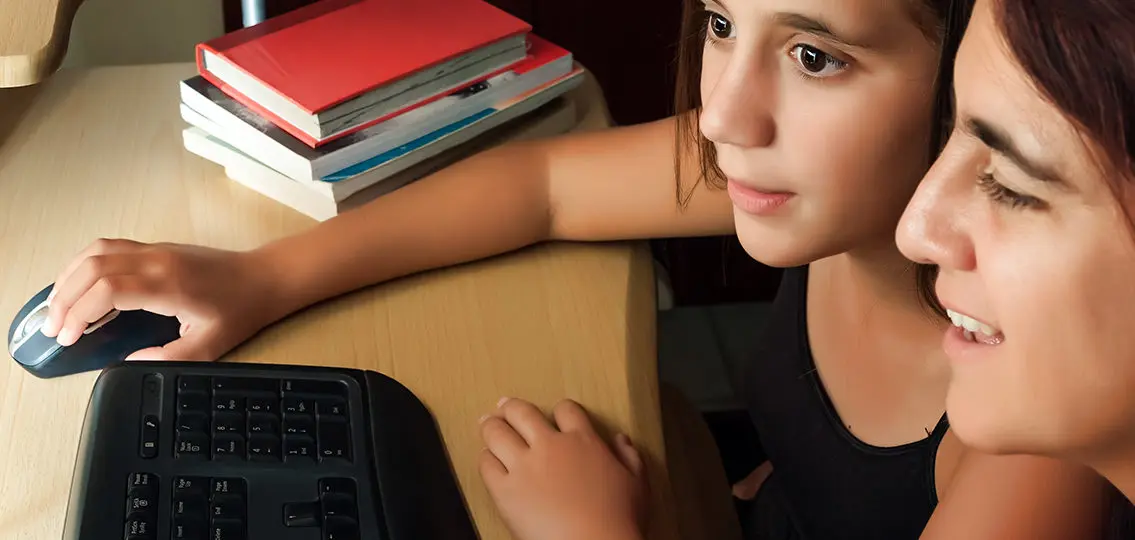I’ll be honest: when I heard that my 5th and 8th grader would be moving to online school due to COVID-19, I thought: “I’m glad they are older.” Say what you will about teens and tweens— I knew my “older” kids would at least understand the big picture situation and have a grasp of what online learning would entail.
Still, I had some anxiety.

“Parents need to realize that online learning is going to look different,” says Linda LoGalbo, Director of Curriculum & Instruction at Beachwood City Schools and a former middle school principal. “It’s new for everyone, but from a parent’s perspective it’s a good idea to provide structure and input in the beginning, and then gradually give your student control.”
Expert Tips for Middle School Students’ Online Learning
Here are some additional Do’s and Don’ts that LoGalbo—and other parents who have been there—recommend for how to help with online classes:
Do stay connected with teachers
I know my strengths—and being a teacher isn’t one of them. LoGalbo says that’s okay: Your teen’s teachers are still there. Depending on your district, your teacher will likely offer virtual chat sessions and/or email dialogues.
“Teachers miss the day-to-day interactions with students. They want to be connected,” LoGalbo says. “We’ve set up a system so students can have time with their teachers via virtual office hours.” LoGalbo recommends that students contact each of their teachers at least once a week with a check-in: “Ask, how did this assignment look, is there anything I should focus on, etc. Parents should encourage their teens to reach out.”
| [adrotate banner=”126″] |
…And classmates
My friend Jill Mason is an online training specialist, as well as the mom of 6th and 8th graders. She knows that interaction and repetition are important to learning, and she put her knowledge to use with her son. “Language Arts is his least favorite subject, and he was trying to rush through it. I said, ‘Why don’t you FaceTime your friend and do it together?’ That got him to slow down.”
Don’t expect a full day
How does an eight-hour school day translate to home? It’s not hour-for-hour, LoGalbo points out. Their district recommends students at the middle school level spend 10 to 15 hours a week on schoolwork (or two to three hours a day). That means you probably don’t need to provide additional homework or math problems for your teens.
“Parents know their child best. If your child navigates school well, then they can probably navigate this okay,” she says. “If your child doesn’t navigate traditional school very well, then as a parent you probably need to step in and help them put some structure to this new model.”
Do make them check email

As a mom of teens and professional educator, LoGalbo agrees: “My kids never check their email. But in education, we’re old-school and use email. The one thing parents can do is make checking email part of the morning routine.”
Do reduce technology distractions
I’ve worked from home for a few years now; I know the allure of hopping on social media “just for a minute or two.” As a former teacher and mom to four, Lisa Boucher knew this would be the case with her eighth-grade daughter, so they designated a family laptop for work projects only, and have their kids use it within sight of them. “It is hard to resist the temptation to watch TikToks or check Snapchat. The rule is: If they are on the laptop, I keep their phones.”
Do remember: You’ve got this
It’s hard not to feel like kids are missing out. LoGalbo keeps her focus on what they’re gaining. “This is a great opportunity for students to become independent learners and to develop grit, self-motivation, and determination,” she says. “These are all important life skills, and this is such a valuable opportunity to learn them.”






